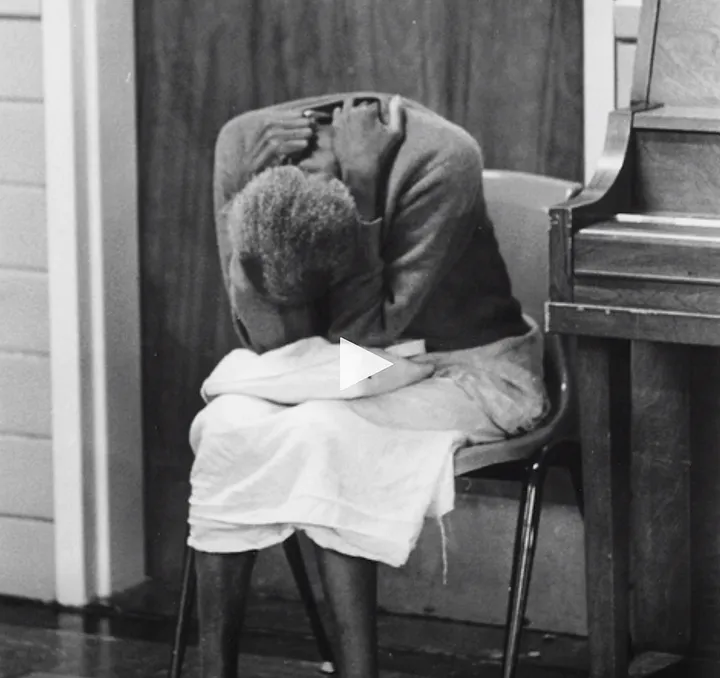
I spend much of my time as a social media marketing consultant curating my clients’ content for social media calendars that benefit their respective brands. This month, my work dovetails with a cause I am passionate about — Minority Mental Health Awareness Month. I am using this month’s focus on minority mental health to do my part to raise awareness and have open discussions about our nation’s mental health policies and my minority community. The timing is right for many reasons.
In 2008, the House of Representatives named this July observance in honor of the prolific author Bebe Moore Campbell, a mental health care advocate whose daughter was diagnosed with a mental illness. Campbell wrote a memoir about her family’s mental health journey, 72-Hour Hold. Not long after the book was published, Campbell went on a book media tour to discuss the issue in the Black community. She died of complications from brain cancer in 2006.
I know well that mental health illness stories exist in all communities of color in America. As National Alliance on Mental Illness (NAMI) CEO Daniel H. Gillison Jr. said in his announcement last week: “We cannot ignore the intersection of race, identity, and mental health. Racism is a public health crisis and has a lasting psychological impact on communities of color across the country. We need systemic change and inclusive solutions to dismantle barriers to quality mental health care and to increase access to culturally competent providers and resources for every community.”
After nearly 20 years of navigating mental health systems as a parent affected by a loved one’s mental illness diagnosis, I am ready to join the fight Mr. Gillison is waging. I feel less emotional pain and no shame. It helps that I recently completed an eight-week course from NAMI called Family-to-Family, where I learned to cope and to better empathize with how my daughter thinks and feels about having a chronic and mercurial illness. It also helps that during my reporting career, I researched and produced a radio series on children’s mental health for WHUR-FM. I know the issue systemically and personally.
Throughout this month’s blog series, most of my knowledge-sharing and commentary will focus on mental health and the Black community. However, given that every American seems increasingly affected by one of the most perplexing and poorly treated illnesses of our time, I am certain we can all learn from each other’s journeys with this illness. History also provides lessons that can motivate us to find paths toward mental health recovery.
Before deciding to write about my experiences with mental health policy and its shortcomings, I stumbled upon a piece of Black mental health history in Maryland. The discovery came out of a mutual hobby and love of photography that I share with my younger brother.
An electrical engineer, my brother often shoots landscapes and architecture. On a recent photo shoot, he spotted a massive abandoned building in Crownsville, Maryland, that he shot and shared with me.


As we talked about his best shots of the building, I said it may have been a hospital. He went back to the site to shoot more photos, but he was asked to leave by a security guard who said he was on government property. Before leaving, my brother asked the guard about the building’s history. The guard told him it was a hospital for Black psychiatric patients. He also learned the building had been abandoned for years, and recently the state of Maryland purchased it. The guard also said there were gravesites behind the building.
My brother called me immediately. He said that I was right about the building. He said he looked it up on Wikipedia and learned the building was built because of legislation passed to house Black people who had mental illnesses. I was intrigued and wanted more details.
According to the Wikipedia account, the Crownsville Hospital Center in Anne Arundel County operated from 1911 to 2004. It was created in 1910 by the Maryland General Assembly in response to a “lunacy commission” report about the deplorable conditions for Black psychiatric patients at a segregated section of a mental hospital in Frederick, Maryland, known as Montevue Asylum, established in 1870.
I was fascinated at this point about the history of the building and what caused early 20th Century Marylanders to care about the condition of Blacks with mental illnesses. I read further and here are my takeaways:
*Throughout our nation’s history, Black people always advocated for better treatment, and some of our fellow Americans listened and took action. But the action was limited. Nearly 30 years after the state created the separate building for a predominant minority’s benefit, The Baltimore Sun ran a series of articles dubbed “Maryland’s Shame” that included these descriptions of conditions at Crownsville:
“More than 1800 men, women, and children are herded into its buildings meant for not more than 1,100. Crownsville is also the dumping ground for feeble-minded negro children and epileptics. The children’s buildings are among the most crowded in the institution. One hundred and fifteen girls spend most of their days in a single, long, bare playroom with virtually nothing to play with. There are so few attendants that the older girls have to carry the helpless ones bodily to and from meals.
“The boy’s side was very dirty, the boys themselves, the dormitories and dayroom. Sitting at dinner were twenty-seven boys completely nude, most of them spilling food all over themselves. There was on that day only one attendant on the boys’ side who was definitely working hard.”
*Some of the mentally ill were used as laborers to construct the building. They were directed to help build their asylum and the account mentions the amazing physical accomplishments of the “patients.”
*When understaffing became a problem at the hospital, the physically and mentally capable patients brought food to those who could not move or were less interested in eating.
*Modern mental health care protocols were implemented by the first Black Superintendent, Dr. George McKenzie Phillips, appointed in 1964.
As tough as it is to learn this history, I draw hope from my takeaways and insights because I choose to embrace the resilience of Black people in the worst of circumstances and the compassion we showed in helping those who could not help themselves. The current state of mental health in the Back community continues to remind us that racism and other realities, like unfiltered 24/7 social media, have taken a psychological toll, particularly on our youth. How could it not?
Black suicide rates, unequal and inexplicable police treatment and shootings, and urban gang violence involving too many Black young men, in particular, are gigantic neon signs that we must “circle the wagons” and do more for ourselves again in a very sober, deliberate, and unwavering fashion.
Put another way, it may be time to celebrate the problem less and instead map a grassroots strategy for innovative solutions that serve our community more. This is not easily accomplished. Entrenched industries, government bureaucracies, and inconsistent psychiatric care protocols have become self-sustaining and inadequate. But as history teaches us, when a situation is not working, we don’t always need a rocket scientist to fix it. We may just need to have the resolve to hit the reset button.

Lisa Cooper
Lisa is a digital media content strategist and mental health care reform advocate. She founded Holistic Homes Inc. in 2023.




